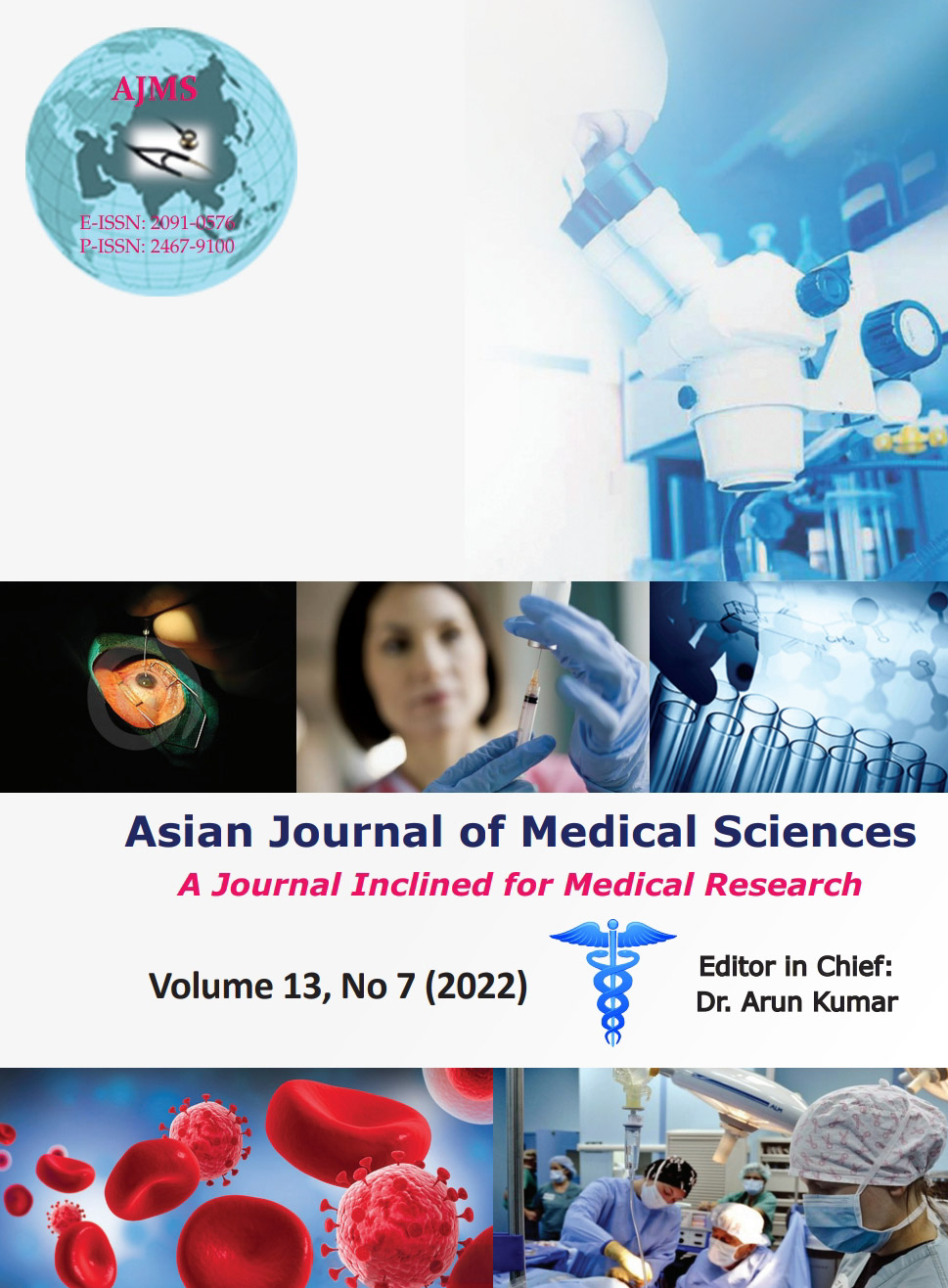An observational cross-sectional study of the serum sodium levels and their association with severity in chronic liver disease patients in a tertiary care center in Haryana
Keywords:
Ascites, Hepatorenal syndrome, Hyponatremia, Liver cirrhosis, PrognosisAbstract
Background: Chronic liver diseases (CLDs) cause significant morbidity and mortality worldwide. Reduced serum sodium concentration is a common finding in patients with cirrhosis, being the most common electrolyte disorder in this setting.
Aims and Objectives: The objectives of the study were as follows: (1) To find the association of altered serum sodium levels with the disease severity (as per Child-Pugh Score [CPS] and Model for End-Stage Liver Disease [MELD]) and (2) to assess for the type of dysnatremias commonly found in CLD and its association with complications of CLD.
Materials and Methods: It is an observational cross-sectional study. It was done for 18 months (June 2019 till May 2020) in the Department of General Medicine of Bhagat Phool Singh Government Medical College for Women, Khanpur Kalan, Sonipat, Haryana.
Results: Among all patients with CLD, 30.8% had serum sodium levels ≤130 mEq/L), 32.5% had 131–135 mEq/L, and 36.7% had ≥136 mEq/L. Thus, hyponatremia was observed in 63.3% of the patients. Mean MELD score and mean CPS were significantly higher in patients with reduced serum sodium levels. In addition, Child-Pugh Class C was significantly more common in patients with serums sodium levels ≤130 mEq/L as compared to other patients. Hepatic encephalopathy, hepatorenal syndrome, and coagulopathy were found to occur significantly more common in patients with serums sodium levels ≤130 mEq/L.
Conclusion: Hyponatremia is very common among patients with CLD. Low serum sodium level was associated with more severe liver disease, more complications, and higher mortality.
Downloads
Downloads
Published
How to Cite
Issue
Section
License
Copyright (c) 2022 Asian Journal of Medical Sciences

This work is licensed under a Creative Commons Attribution-NonCommercial 4.0 International License.
Authors who publish with this journal agree to the following terms:
- The journal holds copyright and publishes the work under a Creative Commons CC-BY-NC license that permits use, distribution and reprduction in any medium, provided the original work is properly cited and is not used for commercial purposes. The journal should be recognised as the original publisher of this work.
- Authors are able to enter into separate, additional contractual arrangements for the non-exclusive distribution of the journal's published version of the work (e.g., post it to an institutional repository or publish it in a book), with an acknowledgement of its initial publication in this journal.
- Authors are permitted and encouraged to post their work online (e.g., in institutional repositories or on their website) prior to and during the submission process, as it can lead to productive exchanges, as well as earlier and greater citation of published work (See The Effect of Open Access).




